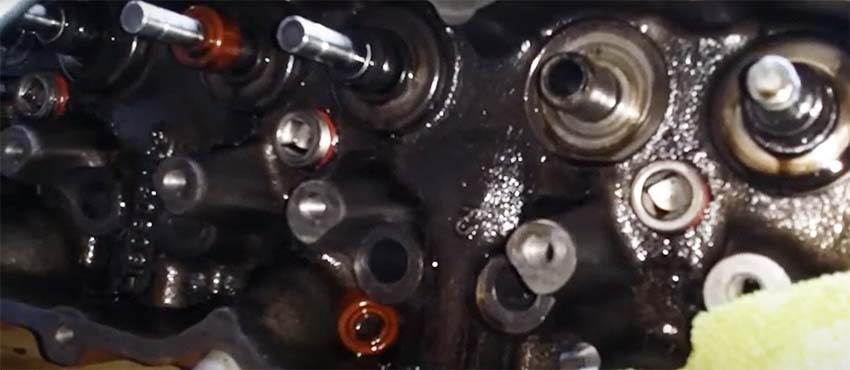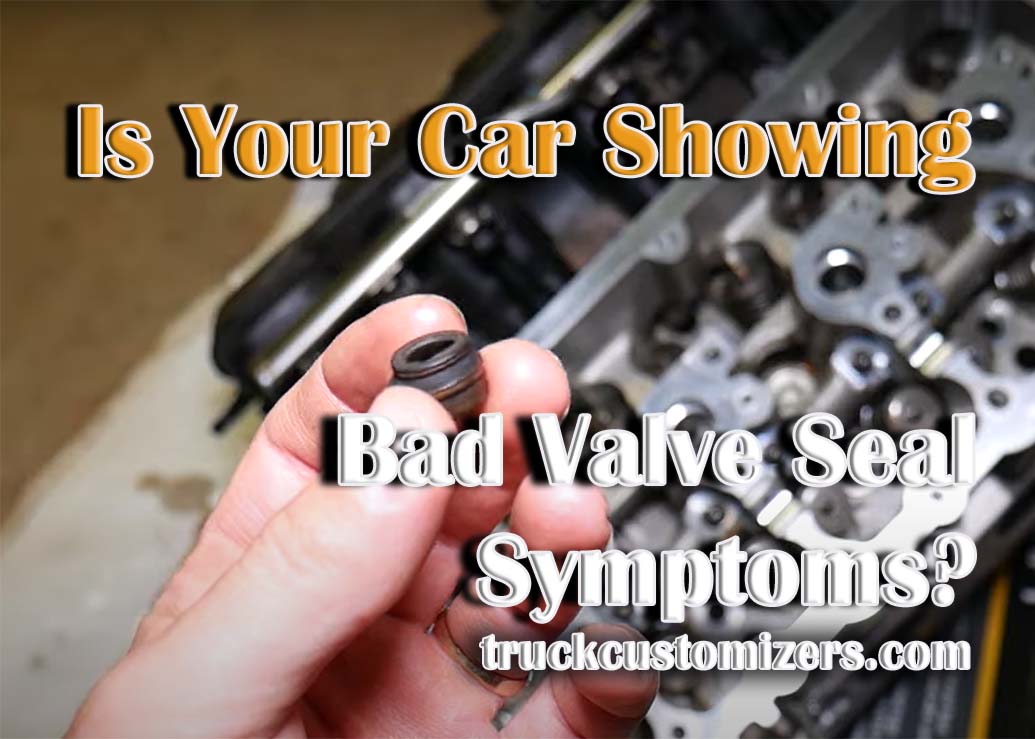Valve seals serve as crucial components deep within the engine’s framework. Their primary responsibility is to maintain an equilibrium in the oil flow, ensuring the engine functions without any hitches. Essentially, they act as a protective barrier, keeping the oil where it’s meant to be and preventing it from venturing into parts where it shouldn’t. With constant exposure to heat and stress, these seals, like most engine components, can wear down over time. When they start to show signs of degradation, it’s an indication of potential engine problems. The ability to identify these symptoms early on is paramount as it not only keeps the engine running smoothly but also circumvents extensive damage and expensive repairs.
Common Bad Valve Seal Symptoms
Valve seals, being central to engine health, manifest specific symptoms when they start to deteriorate. These symptoms serve as warning bells, alerting a driver to underlying issues:
-
One of the most recognizable symptoms is the emission of blue or gray smoke from the exhaust. This is particularly evident during the initial moments after starting the vehicle. When valve seals wear out, they allow oil to seep into the combustion chamber, which then burns and results in this colored smoke.
-
Another symptom to watch out for is a sudden or gradual rise in oil consumption. If you observe that the engine oil levels are dropping faster than usual, without any visible leaks or reasons, it’s a red flag. The deteriorating valve seals could be allowing excess oil to leak into the combustion chamber.
-
A vehicle’s engine is designed to operate smoothly. However, when there are disruptions like failing valve seals, the engine can experience rough idling. This is often accompanied by unfamiliar sounds or vibrations which aren’t part of the engine’s normal operation.
For those who’ve enhanced their vehicles with aftermarket parts, the symptoms can sometimes be subtle or slightly varied. For instance, after installing the Best Exhaust System for GMC Sierra, the characteristics of the smoke from the exhaust might change due to the system’s modified configuration.

The Importance of Addressing These Symptoms Promptly
Immediate attention to faulty valve seals isn’t just about rectifying the current issue. It’s a proactive approach to ensure the engine’s longevity and efficiency. When valve seals compromise, they let oil slip into areas where it doesn’t belong. This doesn’t just impact the immediate performance but over time, can lead to accelerated wear and tear of other interconnected engine components. Ensuring that these seals are in prime condition is akin to safeguarding the entire engine system. By addressing the symptoms promptly, you ensure that your engine stays robust and healthy, offering a smooth drive and peace of mind. Moreover, an efficient engine translates to better mileage, making it economically beneficial to keep valve seals in check.
Solving Valve Seal Issues: Steps to Consider
When faced with the possible symptoms of bad valve seals, it’s essential not to panic. While it’s crucial to address these issues promptly, knowing the steps to take can ensure a systematic approach to resolving the problem. Here’s a step-by-step guide to tackling valve seal issues:
-
Diagnosis: Before jumping to conclusions, it’s vital to get a proper diagnosis. Sometimes, other engine problems can mimic the symptoms of bad valve seals. A professional mechanic can run diagnostic tests to pinpoint the root of the problem.
-
Choosing Quality Replacement Parts: Once you’ve confirmed that the valve seals are the culprits, ensure you select high-quality replacement parts. Opting for cheap or non-standard parts can lead to more problems down the road.
-
Seeking Professional Help: While some avid car enthusiasts might consider changing valve seals a DIY project, it’s often a job best left to professionals. Given the intricate nature of engines and the importance of valve seals, professional installation ensures the job is done right.
-
Regular Maintenance: After addressing the valve seal issue, ensure you stick to a regular maintenance schedule. Routine check-ups can prevent future valve seal problems and alert you to other potential engine issues.
-
Stay Updated: Engine technologies and methodologies evolve. Stay updated with the latest information, tips, and best practices to maintain your engine’s health.
By following this guide, you can effectively address the bad valve seal symptoms, ensuring your engine remains in optimal condition. Remember, proactive care can save you from potential hefty repair bills in the future.
The Consequences of Ignoring Valve Seal Symptoms
Ignoring the signs of bad valve seals extends beyond immediate inconvenience; it’s a pathway to long-term engine damage. When oil starts seeping into places it shouldn’t, the engine undergoes unnecessary strain. Over time, the result is decreased engine efficiency. Oil leakage can disrupt the combustion process, making it less efficient. An inefficient combustion process might cause your vehicle to guzzle more fuel, which, in turn, can hurt your wallet with frequent visits to the fuel station. Moreover, the sneaky oil entering the combustion chamber can cause other engine components to degrade faster. For instance, spark plugs, which play a pivotal role in the combustion process, might wear out prematurely due to exposure to excessive oil.
Conclusion
Bad valve seal symptoms should never be taken lightly. While they might seem like minor nuisances in the beginning, they can signify deeper, looming issues within the engine’s core mechanics. If left unchecked, these minor problems can escalate, leading to significant engine damage, decreased performance, and potentially costly repairs. Regular maintenance becomes not just a recommendation but a necessity. In the grand scheme of things, addressing bad valve seal symptoms early on is both a practical and economical choice. It’s about ensuring longevity, optimizing performance, and ultimately safeguarding an investment – your vehicle.



